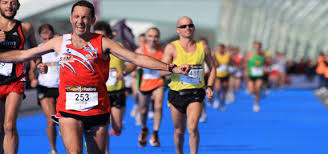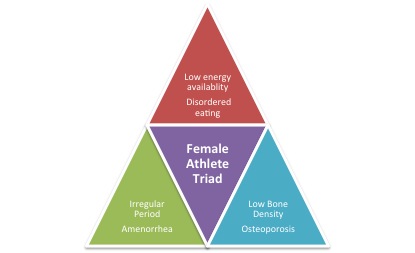|
With the Toronto ScotiaBank Marathon approaching this Sunday (of which I will be running) many people are scrambling last minute to figure out a nutritional plan (At least that’s my impression because many people seem to flood my inbox with questions). I’m sorry to say this, but it may too late and not worth doing at this point. There are multiple reasons why, so let’s take a look. First off, let’s take a look at what carbohydrate loading actually is. Carbohydrate/ Carb loading is a method to manipulate and increase your muscle glycogen stores to provide you with additional energy to complete an endurance-sporting event. The problem is that most people resort to a large pasta dinner the night before the race, likely for the first time ever. The problem is that this ineffective and if you’re trying this for the first time can lead to race day disaster (Never try anything new for races – You’ll never know how your body will respond for the first time). The other problem is that one large plate of pasta simply isn’t enough carbohydrate to be effective. Carb loading is an extremely complicated thing to do. There are multiple stages of a carb load, multiple recommendations in terms of grams of carbohydrate per hour, total carbohydrates consumed and even the type of carbohydrate will make a huge difference. There are multiple phases of an effective carbohydrate loading plan, a moderate loading phase and big loading phase. At this point aside from providing grams of carbohydrates to be consumed within 5-hour blocks to provide constant supplies of carbohydrates, training needs to be reduced. For many people reduction in training simply isn’t an option, luckily there are other methods to effectively carbohydrate load the day before an event for an athlete that refuses to stop training! Additionally, you may not know how your body responds to carb loading because you'll be heavier, the additional glycogen in your muscles also attracts water to the muscles. Often times runners can complain of feeling too stiff after a carb load because their muscles are swollen, which is another reason why you should not do this for the first time before a race! Unfortunately for many of you reading this, that means that this year’s marathon may not have the nutritional plan to fuel the best race of your life, but the good news is you now can begin to understand how complicated carbohydrate loading is. It’s definitely more complicated than a large pasta dinner the night before. So if you’re planning on running the marathon next year then this might be a good sign to work with a Sports Dietitian to establish a nutrition plan for the marathon. But in the meantime, here are some general rules of thumb when eating the few days before a marathon that can actually help you run better then that large pasta dinner:
 Hopefully this shines some light on how complicated carb loading actually is and gives you some helpful information. There are many complicated things to consider, so trying it for the first time before a big run is definitely not recommended. If this is your first marathon, don’t change anything to your plan. This will better ensure that you finish with fewer complications and if there are complications they shouldn’t be new issues, they should be predictable and therefore manageable. If you want to have the best run of your life then it would be worthwhile to work with a Sports Dietitian early on in your training in order to ensure the best race of your life! Good luck to everyone this Sunday! Like I said, I’ll be running the Marathon as well, so if you see Spiderman running alongside you, say hi, because that’s what I’ll be wearing! Benjamin Sit, RD, Sports Dietitian, PTS President of Evolved Sport and Nutrition Complete Lifestyle Management
2 Comments
Now that summer is wrapping up and we begin to fall back into our usual routines (see what I did there?), it’s not surprising that many people may be trying a new diet, cleanse, detox, or ramping up the intensity at the gym. As a Sports Dietitian my thoughts on severe dietary restrictions are not positive, but that isn’t the purpose of this blog. With the drastic lifestyle changes many individuals attempt at this time of year, I thought it a perfect time to shed light on a topic that is prevalent in the female athletic community and can lead to serious health consequences. Relative Energy Deficiency in Sports (RED-S and previously known as the female athlete triad) is a health concern for very active individuals who are driven to excel in sport, however it was previously known to primarily affect female athletes. The triad involves the three following conditions: disordered eating, amenorrhea (irregular or absent menstrual periods), and osteoporosis (low bone density which can increase risk of fracture) (Hertz & Weiss, 2009). Now, RED-S refers to impaired physiological function, which includes, but isn’t limited to reduced/ impaired; metabolic rate, menstrual function, bone health, immunity, protein synthesis and cardiovascular health caused by relative energy deficiency in both men and women (Mountjoy et al. 2014). If you want to be successful in your training, following a controlled diet is important and can lead to enormous improvements in sport, however you can go too far. Severely restricting your calories will not do any good for your body. Below are some consequences of long-term caloric restriction:
A study that analyzed competitive female long-distance runners found that long-term energy restriction with chronic high-intensity exercise correlated with irregular menstrual cycles, characteristics of disordered eating, and low bone mineral density (Cobb et al, 2003). The American College of Sports Medicine states “energy availability is the cornerstone on which the other two components of the triad rest. Without correction of this key component, full recovery from the female athlete triad is not possible” (Nattiv et all, 2007). Following a balanced, nourishing diet that is rich in complex carbohydrates, lean protein and healthy fats is the way to get you to your peak level of fitness. Exercising at a high intensity along with restricting calories can cause a decrease in the hormones that help regulate the menstrual cycle. Stafford (2005) explains in her article, Altered Hypothalamic-Pituitary-Ovarian Axis Function in Young Female Athletes, that females who suffer from the female triad have lower levels of estrogen than their peers. Experts believe that a woman stops ovulating and menstruating to guard against pregnancy during extreme physiological stress and in turn conserves her energy to support necessary physiological processes for survival (Stafford, 2005).  Stafford (2005) suggests that long-term energy restriction and extreme exercise disturbs the hypothalamic-pituitary-ovarian axis. Basically this means that a decrease in hormones also affects bone formation and remodeling and encourages the withdrawal of calcium from bone. Despite performing resistance training that is thought to stimulate bone resorption, it can actually increase the risk for developing premature osteoporosis (Stafford, 2005). Even if you don’t experience a fracture now, low estrogen levels during the most important years of bone-building can affect bone density for the rest of your life. Women may further increase their risk with a diet that is low in calcium and vitamin D. As previously stated RED-S primarily affected women, which was why it was infamously called the female athlete triad until recently. RED-S also affects men, however men are at lower risk but still face many of the already mentioned complications (Mountjoy et al, 2014). It should also be noted that there are specific sports in which there is a higher prevalence for in men, these include: running, cycling, male jockeys, skiiers, gravitational and weight class sports (Mountjoy et al, 2014). Mountjoy (et al, 2014) further report that RED-S can have serious implications for additional body systems with both short and long term effects on health and athletic performance. Athletes with long term low Energy Availability may be at risk at developing nutrient deficiencies, chronic fatigue and reduced immune function (Mountjoy et al, 2014). Physiologically, RED-S can cause medical complications in the cardiovascular, gastrointestinal, endocrine, reproductive, skeletal, renal and central nervous systems, as well as increase the risk for psychological stress and depression (Mountjoy et al, 2014). If that wasn’t enough, carbohydrate deficiency can lead to a reduction in glucose/ blood sugar use, mobilization of fat stores, slowed metabolic rate and a decrease in growth hormone production. RED-S can affect both men and women. For Women, losing your period is not a convenience — rather, it signals that something is wrong. If you believe you are suffering from RED-S/ the female triad or have been experiencing some of these symptoms, the first thing you can do is to improve your nutrition status by increasing caloric intake and your recovery time in your training schedule. The next step is to seek guidance from your Sports Dietitian and family physician to help prevent the adverse long-term effects of RED-S/ the female athlete triad. Emilie Trottier, Registered Dietitian References Hurvitz M, Weiss R. The young female athlete. Pediatric Endocrinology Rev. 2009 Dec: 7(2):43-9 Mountjoy, M., Sundgot-Borgen, J., Burke, L., Carter, S., Constantini, N., Lebrun, C., Meyer, N., Sherman, R.,Steffan, K., Budgett, R., Ljungqvist, A. (2014). The IOC consensus statement: Beyond the Female Athlete Triad--Relative Energy Deficiency in Sport (RED-S). British Journal of Sports Medicine, 48, 491-497. Nattiv A, Loucks AB, Manore MM, et al. American College of Sports Medicine position stand. The Female Athlete Triad. Medicine & Science in Sports Nutrition. Oct 2007;39(10):1867-82. Cobb, K., Bachrach, L., Greendale, G. et al. Disordered Eating, Menstrual Irregularity, and Bone Mineral Density in Female Runners. American College of Sports Medicine. 2003:711-19. Stafford, D. Altered Hypothalamic-Pituitary-Ovarian Axis Function in Young Female Athletes. Implications and Recommendations for Management. Treatments in Endocrinology. June 2005; 4(3):147-54. |
Categories
All
Archives
November 2021
|
- Home/ News
- About
- Services/ Store
- Media
-
Learning Center
- ESN Athletic and Healthy Lifestyle Learning Center >
-
Professional Learning Center
>
-
The ESN Sports Nutrition Certificate
>
- ESN Learning Center - Sports Nutrition Certificate Level 1 >
- ESN Learning Center Sports Nutrition Certificate Level 2 >
-
ESN Learning Center - Sports Nutrition Certificate Level 3
>
- Module 1 - Periodization for the Athlete
- Module 2 - Nutrition Strategies to Optimize Recovery
- Module 3 - Sports Nutrition for Children and Young Athletes
- Module 4 - Sports Nutrition for the Aging Athlete
- Module 5 - Nutritional Strategies for Injury Prevention and Concussions
- Module 6 - Nutritional Strategies for the Travelling Athlete
- Module 7 - Tournament Nutrition Strategies
-
The ESN Sports Nutrition Certificate
>
- Contact
Proudly powered by Weebly




 RSS Feed
RSS Feed